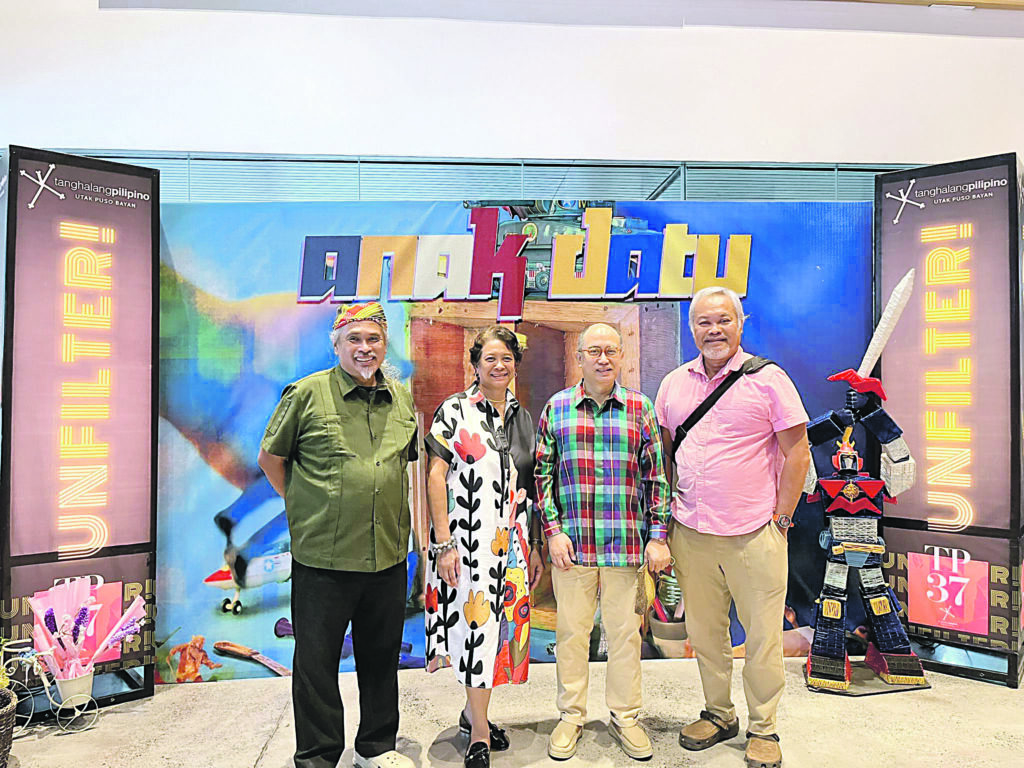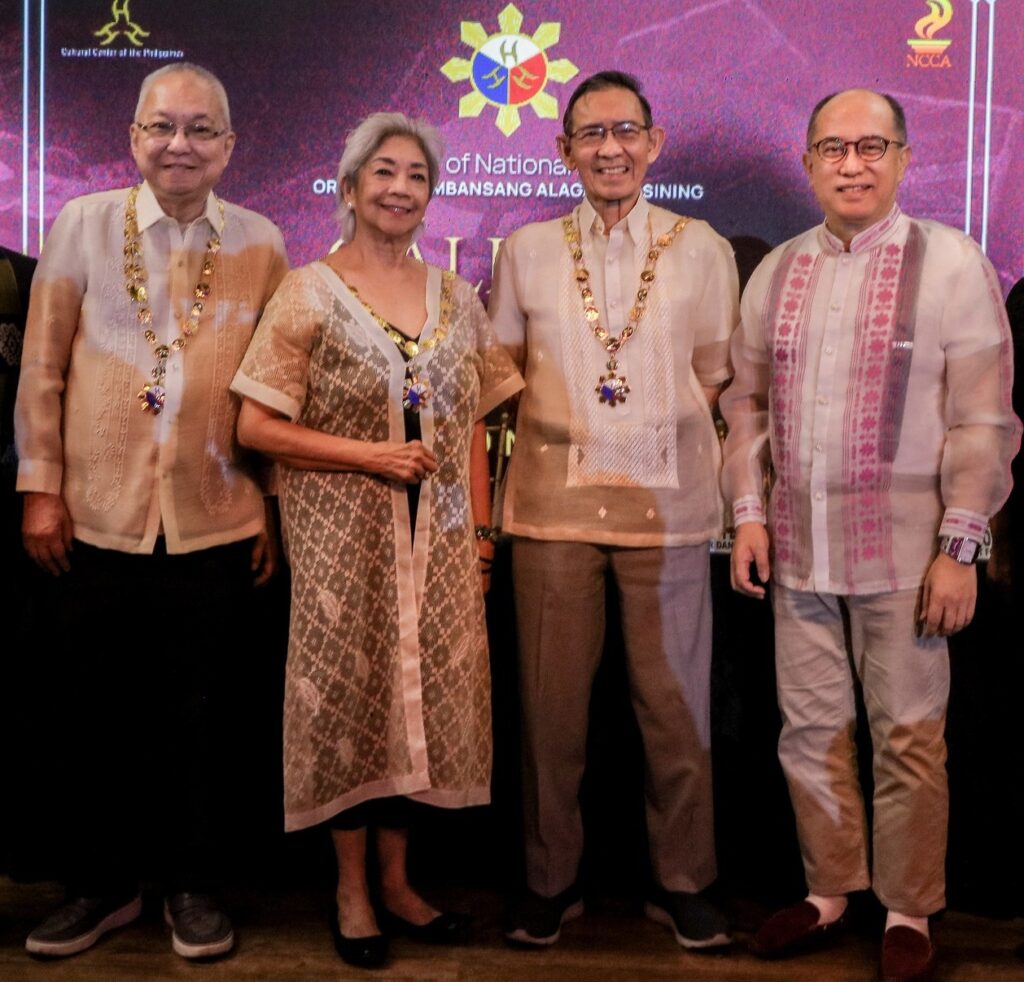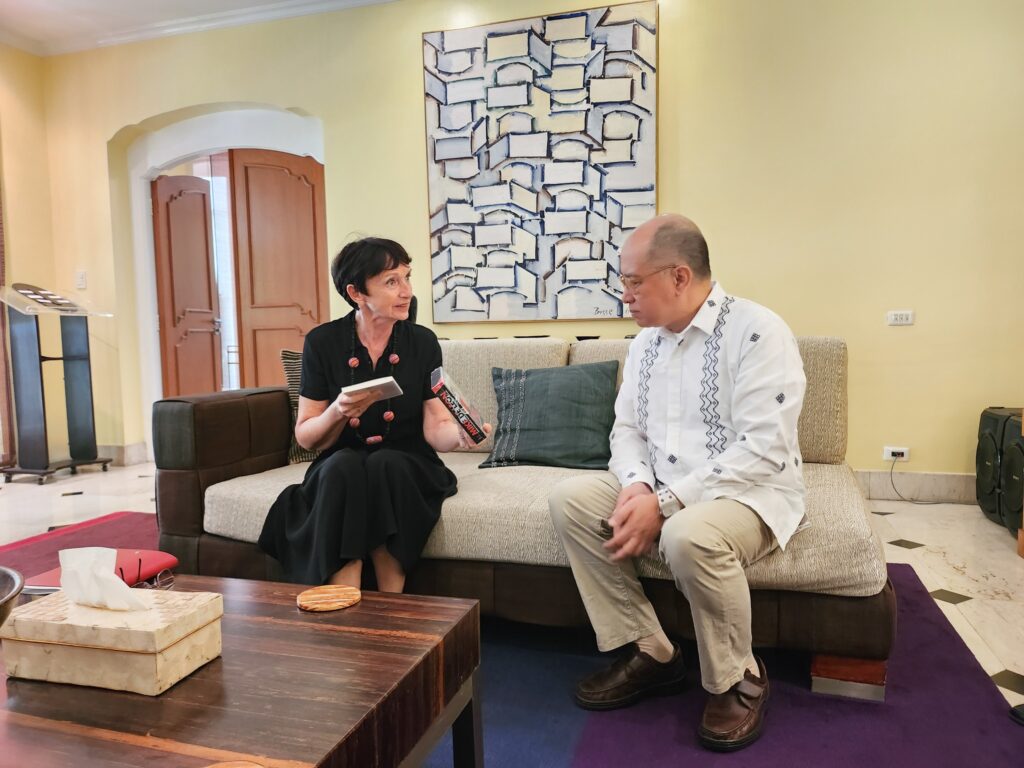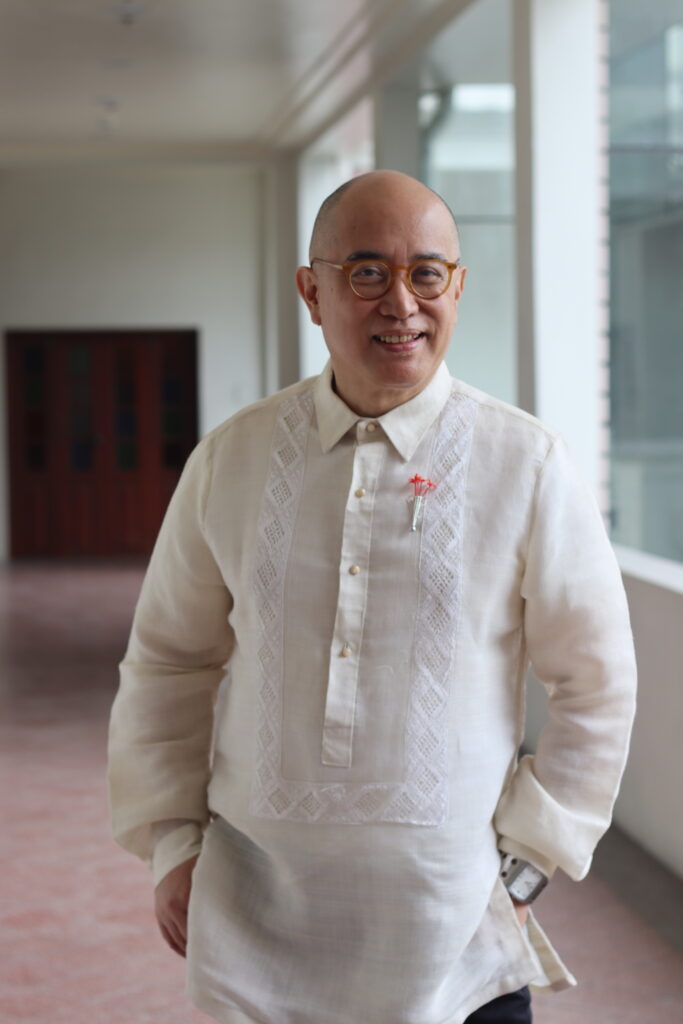As the year 2024 begins, the chairman of the National Commission for Culture and the Arts Victorino “Ino” Mapa Manalo celebrates one year at the helm of the Philippines’ prime national cultural agency and looks forward to a fruitful administration.
As the country moved towards recovery from the coronavirus pandemic and after two years of strict lockdowns, the NCCA Board of Commissioners elected Manalo to lead the agency as well as the cultural sector in shaping a more robust cultural landscape. He took his oath and was sworn into office on 29 December 2022 at the Manila Metropolitan Theatre, with the oath being facilitated by Senate President Pro Tempore Loren Legarda, a member of the NCCA Board of Commissioners, becoming one of the agency’s most accomplished leaders and continuing the illustrious line that includes National Artist for architecture Leandro V. Locsin, businessman and art connoisseur Jaime Laya, historian and author Ambeth Ocampo, composer and professor Felipe M. de Leon Jr., and National Artist for literature Virgilio S. Almario.
After graduating from the University of the Philippines in Diliman with a bachelor’s degree in Humanities in 1982, Manalo went on to earn his master’s degree in International Affairs, with focus in economic development, from Columbia University in New York City in 1985 and a postgraduate certificate in Archival Studies from Hong Kong University in 2011.
He first taught art studies in the Philippine context at UP before serving several cultural institutions. He served as museum director for the Cultural Center of the Philippines from 1989 to 1990 and the Metropolitan Museum of Manila from 2001 to 2006, and Commissioner for Culture of the UNESCO (United Nations Educational, Scientific and Cultural Organization) National Commission from 1999 to 2002. He became a consultant and director of the Cultural Tourism Program of the Ayala Foundation, Inc., from 2006 to 2009, and a consultant of the UNESCO offices in Bangkok, Thailand, and Beijing, China, in 2010.
Since 2011, Manalo serves as executive director of the National Archives of the Philippines and a member of the NCCA Board. He topped the list of passers of the Career Executive Service Written Examination, the first in the four-stage CES eligibility examination process, on 4 March 2012, garnering an impressive rating of 94.30 percent. A total of 37.69 percent or 49 out of 130 examinees passed.
Also a writer, Manalo has won prizes at the prestigious Don Carlos Palanca Memorial Awards for Literature in 1990 in the Short Story in English category (The Hunting Season, special prize), and in 1993 in the Children’s Story in English (Little Bird, Little Fish, and the Two Elephants, third prize) and Essay in English (Listening to My Father, second prize) categories. A short story also won in the Philippines Free Press Literary Awards in 1996.
As he serves until 2025, Manalo shares his some of his insights and plans for the sector and country:



Roel Hoang Manipon (RHM): How do you describe the state of culture and the arts now after the initial years of the pandemic?
Victorino Mapa Manalo (VMM): The Philippine culture, arts and creative industries have been significantly impacted by the pandemic. For one, there was a sense of uncertainty and disruption as cultural events, performances, exhibitions were postponed or canceled, and many sites and institutions were forced to downscale or operate at a much smaller scale.
However, what is inspiring is that the local culture and arts community has shown remarkable resilience and adaptability. Many artists and cultural institutions have turned to digital platforms to continue creating and sharing their work, reaching new and diverse audiences here in the Philippines and beyond. While challenges remain, we are witnessing a resurgence of creativity and innovation in the cultural and artistic sectors.
RHM: How do you think the pandemic affected culture and the arts, and the sector?
VMM: The pandemic exposed vulnerabilities in the sector, particularly for artists and cultural workers, many of whom rely on live performances and events for their livelihoods and do not have the social safety nets enjoyed by regular employees. At the same time, many cultural institutions — both in the government and private sectors — faced financial strain and had to rethink their operations. On the plus side, the pandemic restrictions have accelerated digital transformation and encouraged collaborations across regional and national borders. In addition, it is important to highlight that the pandemic has shown people the important role that culture and the arts play in providing spaces for solace, reflection and inspiration during challenging times.
RHM: How does the NCCA figure in the recovery phase?
VMM: As the lead agency of the government in formulating policies and programs for culture and the arts, the National Commission for Culture and the Arts plays a pivotal role in helping the sector recover after the pandemic. We are committed to providing support, resources, and guidance to artists, cultural workers, and institutions as they rebuild and adapt. During the early days of the pandemic, we rolled-out a program that provided emergency financial assistance to displaced workers in the culture and the arts sector, with the support of the national government. Moving forward, we have focused on creating capacity-building programs and advocating for policies that promote the sustainability of the cultural and artistic sectors and their livelihoods.
RHM: As chairman, what areas and fields do you think need extra attention? Why?
VMM: There are certain areas I would like to focus on as NCCA chair. These include:
Cultural education. We must prioritize cultural education at all levels to nurture the next generation of artists and cultural enthusiasts. This includes promoting arts education in schools and communities, and developing programs that connect cultural education with sustainable development, and programs that help foster critical-thinking and love of country, as outlined by the President.
Cultural preservation. The President has recently signed the Cultural Mapping Law, which amends and supplements the National Cultural Heritage Act. One of the main features of this act is harmonizing cultural heritage and natural properties of cultural significance. Hopefully, this law will provide an impetus to a whole-of-society approach to identifying, classifying and preserving the nation’s cultural heritage. We need to continue collaborative efforts to involve the grassroots in conserving and promoting our nation’s heritage.
Digitalization and innovation. The pandemic highlighted the importance of digital platforms for artists and cultural institutions. We need to invest in digital infrastructure, training and tools to ensure the sector’s resilience and competitiveness, which hopefully will provide better economic opportunities for artists and cultural workers.
Programs for the youth. These can be along the lines of educational lectures and thematic, non-formal educational programs, including accompanying lectures for artistic productions.
Community-based approach.
RHM: How important are culture and the arts in nation-building?
VMM: Culture and the arts are fundamental to nation-building. A nation needs to stand on two legs for it to develop holistically: Culture and the arts as one leg; and science, technology, engineering and mathematics as the other.
RHM: What is your projection of the directions and growth of culture and the arts in the near future?
VMM: In the near future, I anticipate several directions and growth areas for culture and the arts:
•Hybrid and digital arts. The integration of digital technologies into artistic expression will continue to expand, creating new forms of art and engaging broader audiences.
•Cultural sustainability. There will be increased emphasis on preserving and revitalizing traditional arts, languages and practices to ensure their sustainability.
•Global collaboration. Artists and cultural institutions will increasingly collaborate on international projects and exchanges, enhancing cross-cultural understanding.
•Cultural entrepreneurship. Artists and cultural workers will explore innovative business models and entrepreneurship to support their creative endeavors.
•Cultural tourism. Cultural tourism will play a vital role in economic recovery, with a focus on promoting cultural heritage and unique cultural experiences.
•Cultural diplomacy. Cultural diplomacy will continue to strengthen international relationships and promote cultural exchange as a means of soft power diplomacy.
•Community engagement. The arts will play an increasing role in community development and social cohesion, addressing local and global challenges.
•Youth programs.
•Educational programs on heritage sites.
Overall, the future of culture and the arts holds immense potential for growth, innovation and positive impact on society. As NCCA chair, I am committed to harnessing this potential and ensuring that culture and the arts continue to flourish in the Philippines.
